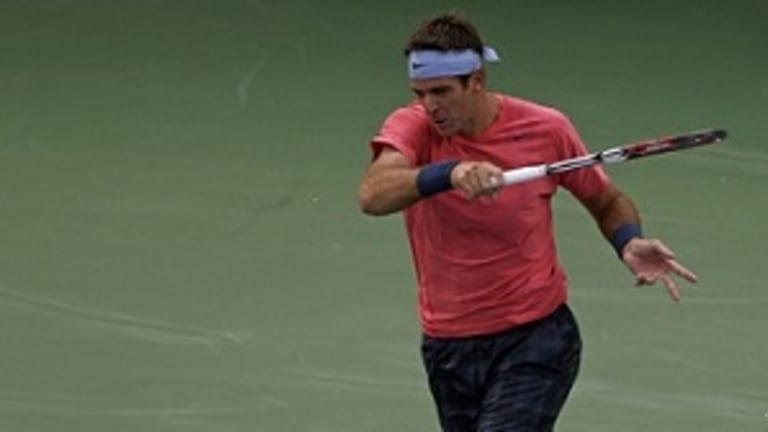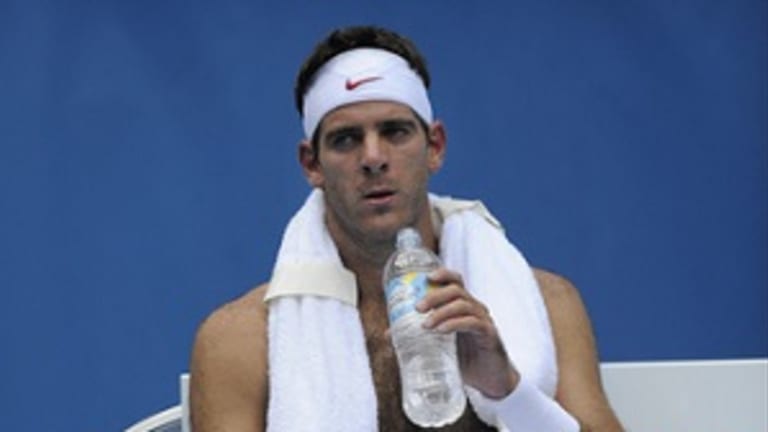If you’re hoping to see Juan Martin del Potro cracking those blistering forehand and stinging backhands before the year is out, I’d suggest you book a plane ticket right now for Kuala Lumpur, or Tokyo.
Both of those tournaments are featuring Delpo in their promotional materials, but that implied promise and a dime might get you a string-a-ling. Still, the real news here is that barring a miracle we won’t be watching Delpo trying to drag that “old Delpo” (circa 2009) back up out of his injured body or severely tested spirit at the U.S. Open. I have that on excellent sources.
And so the saga of Juan Martin del Potro goes on, and it’s become part parable, part cautionary tale. You remember well enough how it began: del Potro blasted — literally — his way into prominence in 2008, winning four consecutive titles. Two of those events were on clay in Europe, the other two on hard courts in the U.S. Delpo amassed a winning streak of (ultimately) 23 matches that summer, the second longest ATP winning streak by a teenager in the Open era (behind Rafael Nadal). He was still just 19 years old.
But even then there were ominous signs: Who remembers that early in that breakout year, Delpo was ripped up by injuries and so distressed by his condition that he ended up changing coaches as well as his physical trainer? Seeded No. 7 at Adelaide, he was upset in the first round. He had to retire against David Ferrer in the second round of the Australian Open due to injury. He was off the tour until March, and by April he was down to No. 81.
In May of 2008, he had to quit a match against Andy Murray in the Rome Masters 1000, this time with a bad back. Delpo struggled through the next few weeks, winning but one match at each of the early summer majors. He went to Europe to play the emerging mini-clay circuit mainly because his team wanted to test his fitness.
You might say Delpo passed the physical test.
It would be one of the rare times that he would.
By the end of that year, Delpo was the youngest member of the Top 10 (No. 9) and the highest-ranking South American. The stage was set for del Potro to shock the world, or at least that portion of it that had an interest in tennis.
Two-thousand and nine was career year and a dream year. Delpo won Auckland (his first event of the year) but fell to No. 2 seed Roger Federer in the quarterfinals of the Australian Open. He nearly ruined Federer’s golden opportunity to finally win the French Open (thanks to Robin Soderling’s stunning upset of Rafael Nadal) by stretching Federer to 6-4 in the fifth in their semifinal.

